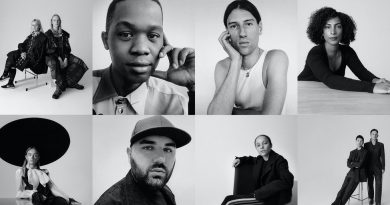Beauty’s Big Data Opportunity | BoF Professional, The Business of Beauty, News & Analysis
Revieve and No7’s AI Skincare Advisor interface. Revieve, BoF collage.
When the pandemic put a stop to in-store makeovers, Benefit was lucky to already offer a virtual brow try-on experience on its website, where users could upload a photo and test different brow products, shapes and thicknesses. But the service, which launched in 2018, was never just about recreating the beauty counter experience online.
When a consumer plays around with their photo on the site, they are also giving the LVMH-owned brand information about their makeup preferences (they first agree to the company’s privacy policy). Benefit has learned that their customers generally preferred a neat, natural brow look over a full, feathered, dramatic brow. Users experimented with five or six shapes during try-ons, telling the brand that customers wanted to play with different brows rather than wearing the same look day after day.
The brand has updated its marketing to reflect what it learned: images are more likely to feature natural styles, and a campaign for a new pencil might emphasise the number of looks it can create.
Brands like Benefit are mining customer data to find an edge in a crowded beauty market, where most major categories have seen a flood of new labels launch over the last few years, many promising to offer consumers a unique, personalised experience.
The industry is trying to quantify the sort of intelligence once learned through conversations at the beauty shop or department store makeup counter, when consumers shop for cosmetics on countless websites and social media platforms. At the same time, brands must fight constantly for prime placement on retailers’ websites, and data can help make the case, said Toto HaBa, Benefit’s senior vice president of marketing and communications.
“The landscape that we’re dealing with is becoming more and more complicated,” HaBa said. “While you had just a couple of partners five years ago that you had to keep track of, now we have so many different channel partners.”
Data’s Beauty
Because beauty purchases are so personal, brands need to get to know their customer at a granular level, said Jessica Couch, co-founder of Fayetteville Road, which helps retailers understand niche markets and women of colour. Customers want to know how products fit into their lives and reflect their individuality.
“We’re dating the customer,” said Couch. “You have to get to know them, you have to wow them, you have to give them an experience that’s worth coming back to, and it’s not just as simple as dangling products in front of them.”
The same could be said for clothing or any number of consumer goods. But beauty brands have one key advantage: consumers love to share their feelings about makeup and skin care on social media. Beauty influencers and brands were among the first and best at building large followings on platforms ranging from YouTube to Instagram to TikTok. The likes and comments on their videos generate powerful sets of data for brands.
Data collection and analysis enable brands to identify their audience’s unique problems and focus on those problems — with the end goal of matching consumer to product, which, Couch says in an ideal world will be on a one-to-one basis where every product is designed specifically for a person and waste is reduced.
Doing Data Right
It’s possible to find something in a data set to support just about any claim — that doesn’t mean it’s true, or that the conclusion will help sell more products.
Retailers have used data to justify selling fewer products designed for people of colour, Couch said. After all, studies of these stores’ mostly white shoppers found they weren’t interested in darker shades of foundation.
Last fall, Fayetteville Road worked with Nordstrom on a survey to help the retailer understand what issues people of various ethnicities care about, and what they feel is missing from their makeup bag, so that they could focus on beefing up their beauty offering to serve a more diverse customer base.
To avoid similar missteps, Sampo Parkkinen, founder and chief executive of beauty data analytics and technology firm Revieve, says brands can think about both who, and what, specifically, data collected represents, then interrogate what biases could be built into each set. Additionally, brands can centralise their data so that when making decisions, they can see a full view of the individual and understand their motivations and habits.
Often, data is split into different departments: one piece will sit in the marketing department, another in store operations, another piece lies with the beauty advisors and then some sit with the finance team. The result? “Everybody makes decisions based on an incomplete and fractured view of the consumer,” said Parkkinen.
Volume matters too. Benefit combines data from different sources to understand its place in the fractured beauty market. For example, it might combine information on large companies from the market research firm NPD with Google search data on smaller, direct-to-consumer brands. Benefit considers both types of companies to be competitive, and no one data set captures them all, according to HaBa.
“There is a big opportunity for the very large established brands to really leverage the data because they’re able to collect data really quickly at scale,” said Parkkinen. “And that’s a big advantage.”
Beauty brand No7 is part of the Walgreens Boots Alliance, so it has access to mountains of data from the chain’s website and thousands of stores.
The brand has made “personalisation at scale” a priority, according to Anisha Raghavan, No7 Beauty Company’s chief marketing officer. Most recently, the brand worked with Revieve to take data about customers’ individual skin concerns and combine it with location data to offer product guidance. Conversion rates jumped once the project was implemented, Revieve found.
Though they may not have the same volume of data, smaller brands are still poised to capitalise off of a good data strategy, because of their proximity to their audience.
Beauty brand Farmacy doesn’t have a huge trove of first-party data, nor does it have the capacity to invest in robust data services. But it does social listening — reading and responding to all comments, DMs and posts about the company and its products — and adapts accordingly.
Farmacy is coming out with a new cleansing balm without essential oils. It was able to react to consumer demand in real time, according to Mina Chae, vice president of marketing for the company.
The brand receives up to 250 direct messages per day, and several hundred reviews weekly. By analysing that feedback, the brand saw interest in the new formulation from consumers with sensitive skin. The brand teased the formulation on social media multiple times before launch to measure interest, and the resulting Clearly Clean Cleansing Balm will be available on Sephora’s website beginning next month.
Speaking the Language
Data can also help brands discover new market opportunities — Couch points to hyperpigmentation and finding the perfect nude lip as examples of yet-to-be-saturated categories.
Benefit’s HaBa said the brand’s constant surveying helps it both get in early with emerging social media stars, and anticipate gaps in the brand’s exposure. Most recently, the brand moved into the gaming world after it noticed there were actually more women watching gaming videos than beauty videos. Benefit hopes that by being one of the first companies to reach out to the segment and understand its needs, it will build loyalty within it.
“You need data partners to help you identify that talent. It has dramatically changed how we approach our influencer partnerships and who we choose to partner with,” said HaBa.
Related Articles:



